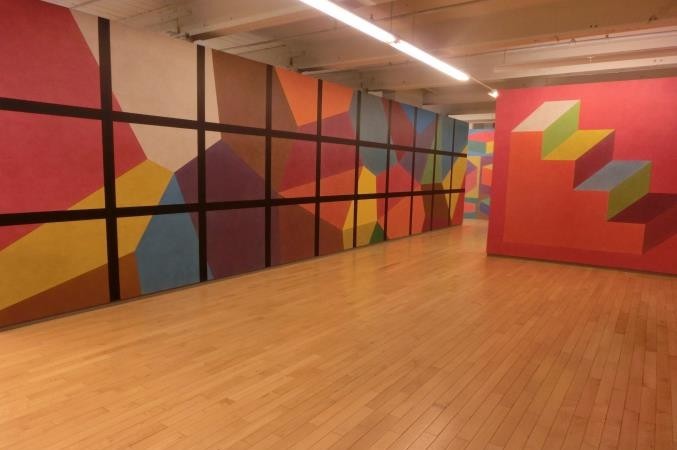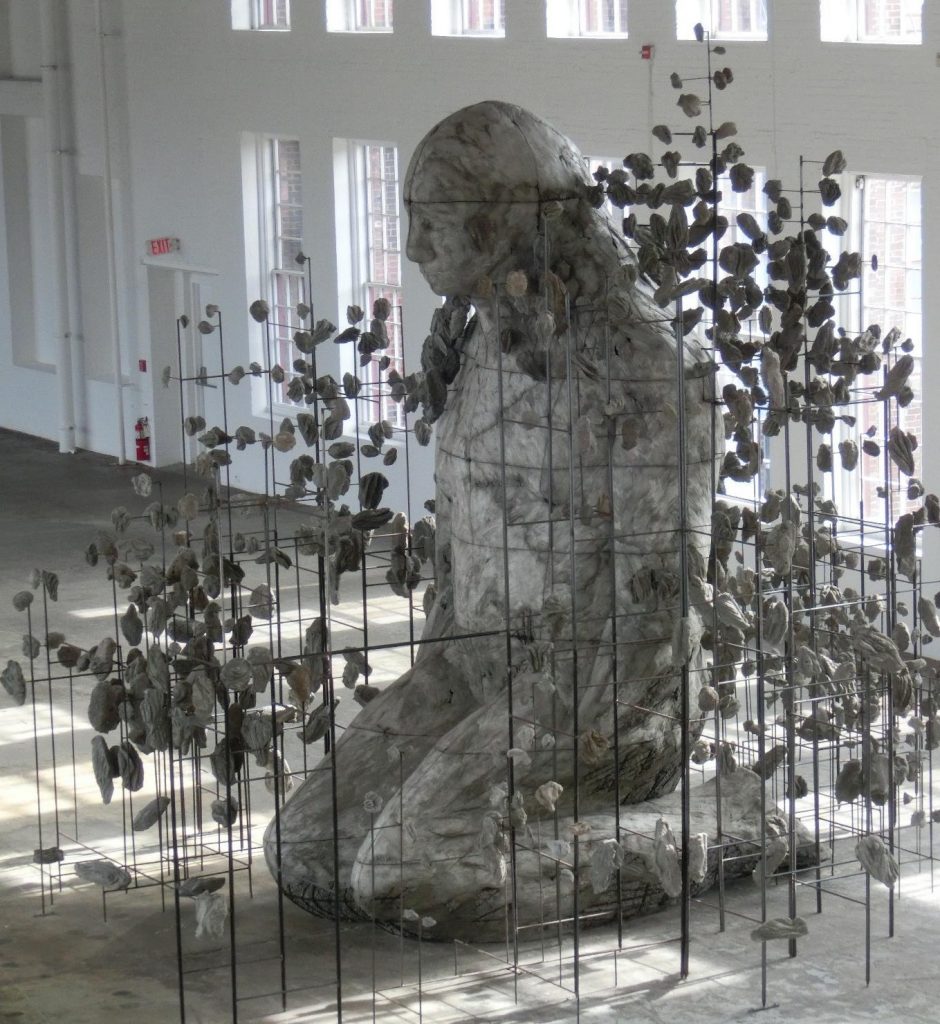MASS MoCA stands for the Massachusetts Museum of Contemporary Art. It is located in an old town called North Adams in the north-western corner of the State of Massachusetts in the United States of America. My visit to MASS MoCA was clubbed with The Clark Institute – a paradise for art lovers – in Williamstown, an area adjacent to North Adams. An additional day, 29th February, of the year 2020 (which happens to be a leap year), gave us an opportunity to access the connotations of life imbued in the art objects placed in the two museums. We could immerse ourselves for the day in an ocean of creative thoughts.
Our team was comprised of five members, most of whom were academics. Starting from the town of Amherst, we meandered through the villages, towns, forests, and the hairpin turns on the hills (much like the roads of the outskirts of Shillong), for more than two hours, to reach MASS MoCA. It was as if the beauty of the snow-clad nature of the late winter was waiting to welcome us cordially to enjoy it throughout our journey. Perhaps, it even decreed the sun not to shine much on the snow and indicated the snow not to melt away quickly until we get to our destination. In the way, we stopped at a small and quiet town called Buckland.
The town of Bucklan
By tracing its history, we easily reached a time when, two hundred years ago, the British colonizers started a hub of manufacturing industries at North Adams, in the region which came to be known as New England in America. The information that can be found on the website says: ‘The 16 acres of grounds in North Adams, Massachusetts, encompass a vast complex of 19th-century mill buildings and occupy nearly one-third of the city’s downtown business district.’ Its journey from the mills to a museum is not only a part of the eventualities of history, but also is indicative of the economic, industrial and architectural changes that remained as factors of paramount influence. The trend towards a globalized world contributed to the shift of capital investments from America and Europe to Asia, more specifically to China, Japan and South Korea, mainly to avail cheap labour and raw materials, for setting up new manufacturing units.
Galleries in MASS MoCA
Major contemporary artists have created their art works using various forms and materials. Colourful designs with glass, murals or frescos and graffities on the walls are remarkably attractive.
Linear graffities on the wall
A large sculpture of a human figure surrounded by a thousand small things
The act of measuring the eternal values hidden in the immortal objects of art often proves to be baffling, as the element of time drives man to discover vistas where he can fulfil his unquenchable desire of gaining as much meaning as possible in life. Spending only two-and-a-half hours at MASS MoCA can seldom justify the merit of the treasures it is endowed with. Still, a special reference, as this less-educated onlooker feels, must be made to the works of Louise Bourgeois who ‘was intrigued by the subconscious, and her work is often understood as an expression of repressed feelings’.
‘PASS’, ‘Nature Study’ ‘The Couple’ and ‘Untitled’ sculptures are her available creations that unfailingly engage the viewer’s imagination.
UNTITLED

The Clark Institute, in short, The Clark, is another museum situated in a nearby place called Williamstown, as I’ve mentioned above. Today, under the aegis of Williams College, the museum is jointly administered by The Clark and the College, and offers one of the world’s most respected graduate programmes in the history of art. It was developed by Sterling Clark and his wife Francine Clark. Sterling Clark had a distinguished career in the U.S. Army and was also an heir to the Singer sewing-machine fortune. Francine Clark was an actress of repute
in Comédie-Française in Paris. ‘The two shared a passion for art and quietly began building a remarkable collection of paintings, sculpture, silver, porcelain, drawings, and prints.’ With their private collections of the pieces of art, that they collected over forty years, The Clark Institute offers an ensemble of the works of some major European and American masters. But, even before entering the gate of The Clark, we were humbled by some of the inscriptions on it and the picturesqueness of the Institute’s surroundings.
‘Am I ready to get in to have a inside’, I asked myself, ‘or shall I remain outside forever to be enamoured by nature?’ I was completely in a fix. However, it is perhaps the rational mind that always wins. I tried my best to appear like other so-called ‘smart guys’ to hide my awe and entered the precincts of a treasured island, slowly.
Impressionism flourished during the later half of the

nineteenth century. Like many other styles of painting, it has germinated from the avant-garde and the norm-breaking spirit of the French artists. Leading among them were Claude Monet, Alfred Sisley and Pierre-Auguste Renoir. In most of their works, the artists have depicted nature not as it is but ‘as is seen’ by them. The emphasis on the ‘accurate depiction of light’, ‘relatively small, thin yet visible brush strokes’, ‘ordinary subject matter’, and ‘the effects of the passage of time’ are
‘Green Landscape’, 1886, oil on canvas by George Inness
some of the characteristic features of Impressionism. In America, George Inness, a follower of the Swedish philosopher Emanuel Swedenborg, believed that the spirit of God was present throughout the natural world. Inness’s nature paintings display an array of impastos of impressionistic style. In The Clark Institute, Inness’s paintings are exhibited in a considerable portion of the galleries, along with the masterpieces of Monet, Renoir, John Constable, Vincent Van Gogh and several other impressionistic painters. A self-portrait of Pierre- Auguste Renoir drew my attention for some reasons unknown. I took a long time to observe the creation of the artist’s own bodied self.
Here I also found Monet’s Cliff at Étretat and Rodin’s famous sculpture The Thinker.
‘How was your trip?’ An aged professor in our team asked me when we all came out in the afternoon.
He is an American but he is acquainted with India and its culture for he has been visiting the country for the last thirty years. It was basically his plan to show us something memorable in his country before we go back to India. In my reply I asked him, ‘Do all visitors to the US come to see this place?’
He gave a silent smile.
I said, ‘It should be made mandatory’. Indeed, I believe, no institution in the world can offer a better form of education or, in other words, an aesthetic education, to humanity than such places of excellence as these art museums that I had the opportunity to have an experience of. Before bidding adieu, I looked up to see the place once more. The sun god had initiated his routine proclamation of the end of the day. We set out on our journey back to the town of Amherst.
